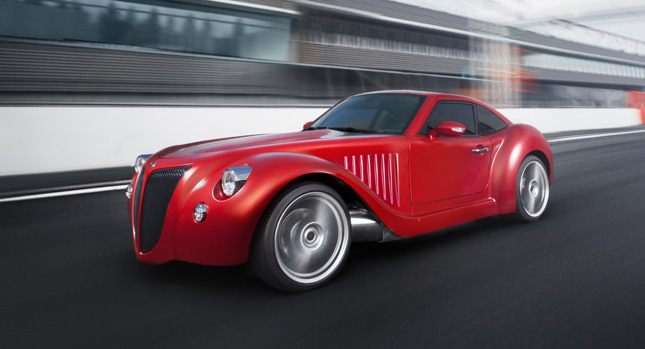Imperia is a Belgian car brand that built motorcycles and automobiles from 1904 to 1958. It was resurrected 50 years later by Green Propulsion, a company that spent only €400 (US$523 at today’s exchange rates) to acquire the brand.
It did so in order to build a hybrid sports car under the name of Imperia GP. Fast-forward to 2013 and the concept car is ready for production. While it may be dubbed the Belgian Wiesmann due to its resemblance to the German manufacturer’s GT model, the retro-styled GP uses design cues from past Imperia models.
Designed in-house with the help of Denis Steven, the GP’s most striking features are the vertical radiator grille and the front wings separated from the engine hood. On the inside, the dashboard is dominated by curves, while the analog instruments continue the retro theme.
The hybrid powertrain is a completely different story, with Imperia claiming the GP is one of the “greenest” sports cars around. It combines a BMW/PSA-sourced 1.6-liter turbocharged engine delivering 200 bhp and 260 Nm (192 lb-ft) of torque with an electric motor producing 150 bhp and 350 Nm (258 lb-ft) of torque, for a total 350 bhp and 610 Nm (450 lb-ft) of torque.
That’s good enough to allow the 1,200-kg (2,645 lbs) GP accelerate from 0 to 100 km/h (62mph) in 6 seconds in pure electric mode, and in 4 seconds in hybrid mode. Top speed is limited to 216 km/h (134 mph) to avoid complete battery depletion.
Interesting figures for a car that is said to return a combined fuel consumption of 1.9 liters/100 km (123.8 US mpg) plus 11.5 kWh/100 km in hybrid mode and emits under 50 g of CO2 per kilometer. In electric mode, the 11 kWh batteries offer a driving range of around 60 km (37 miles), with a full battery charge taking 4 hours and 30 minutes.
While all may sound good so far, there’s a downside, and it’s a big one. The first models that will be delivered toward the end of the year will cost €125,000 ($163,300) in Belgium. Later on, Green Propulsion will launch a more basic version priced at €95,000 ($124,000). Initial production is estimated at 100 cars a year, but the company’s goal is to make 200 cars a year.
By Dan Mihalascu
PHOTO GALLERY


























